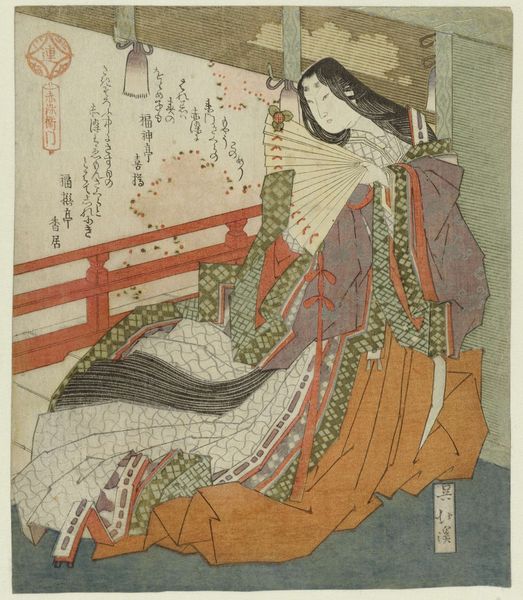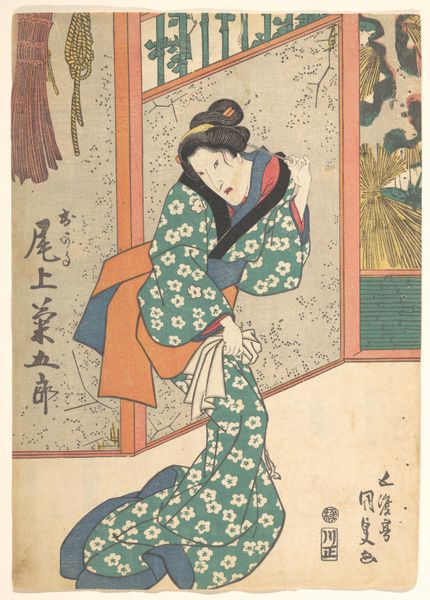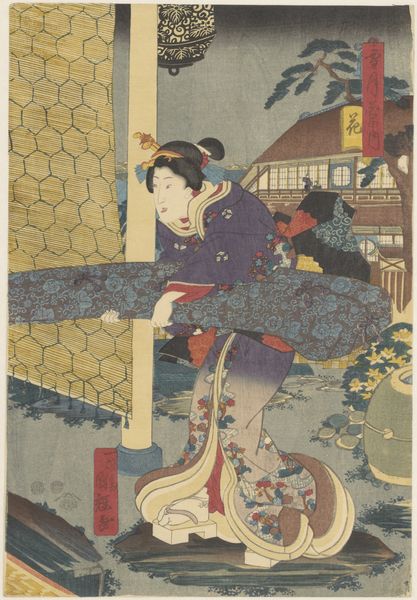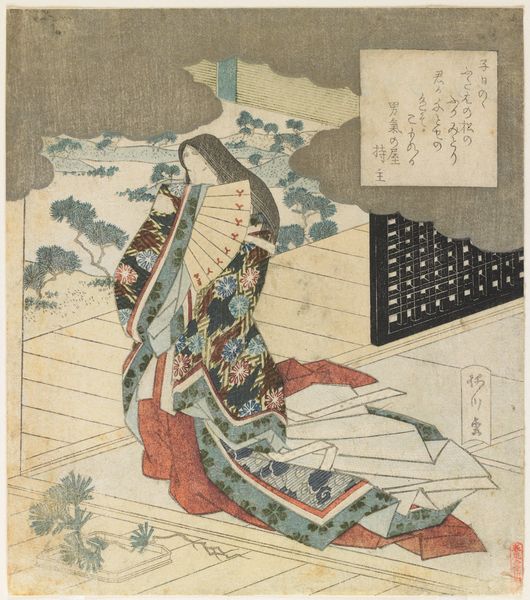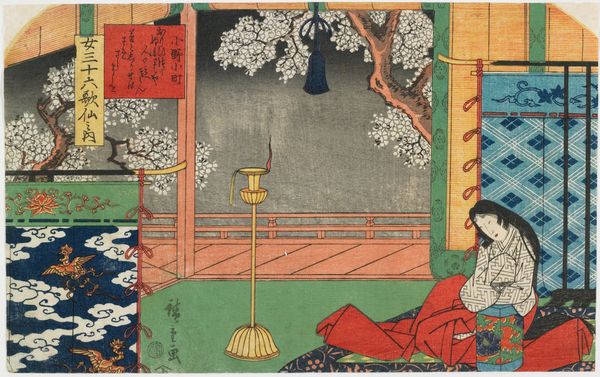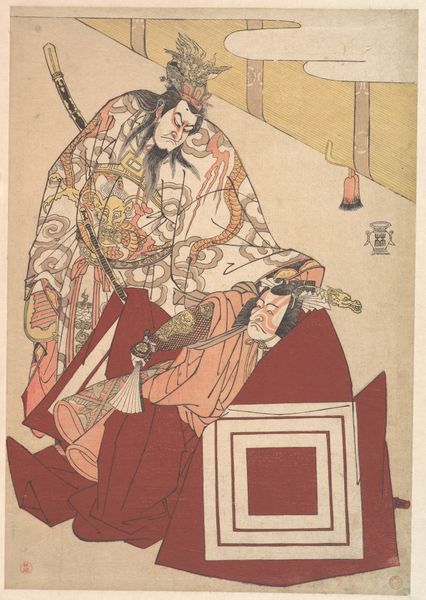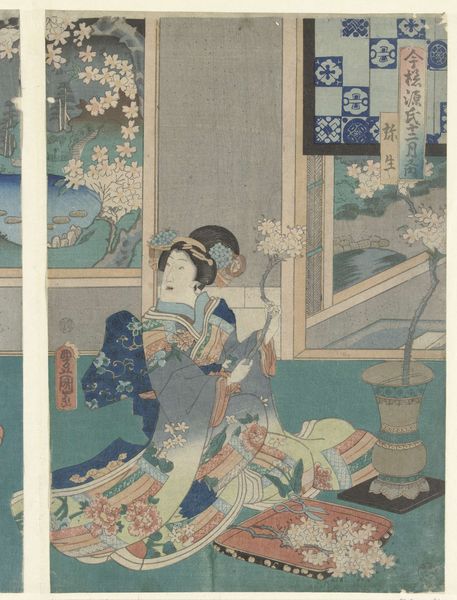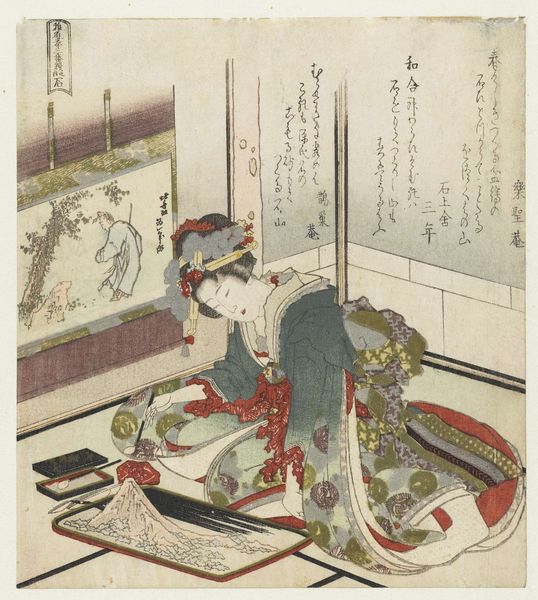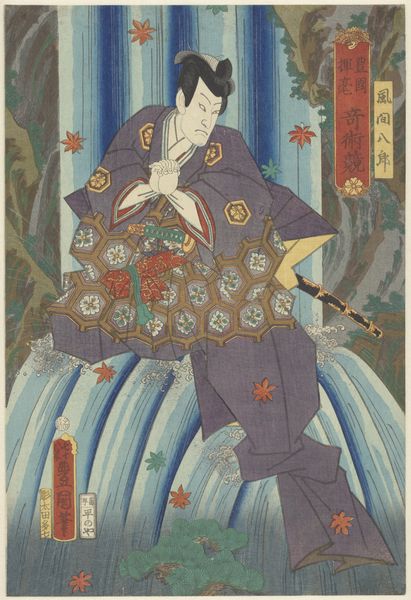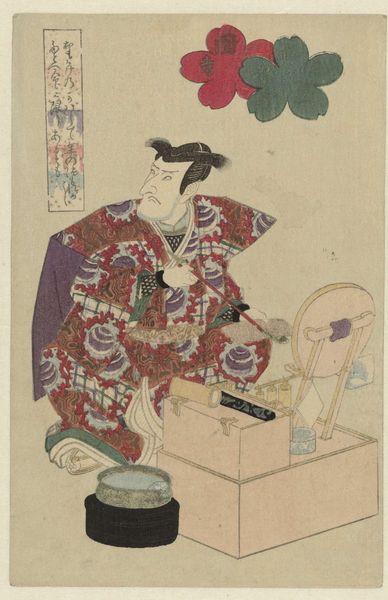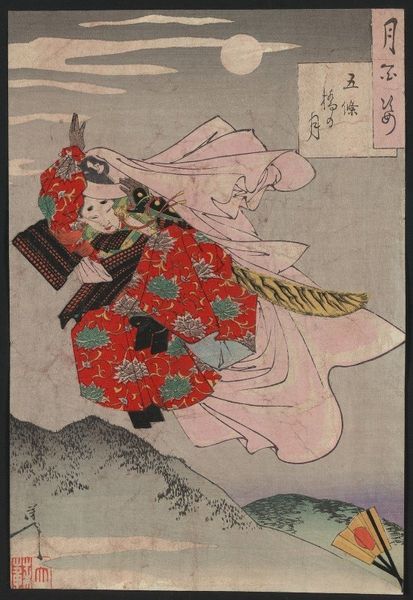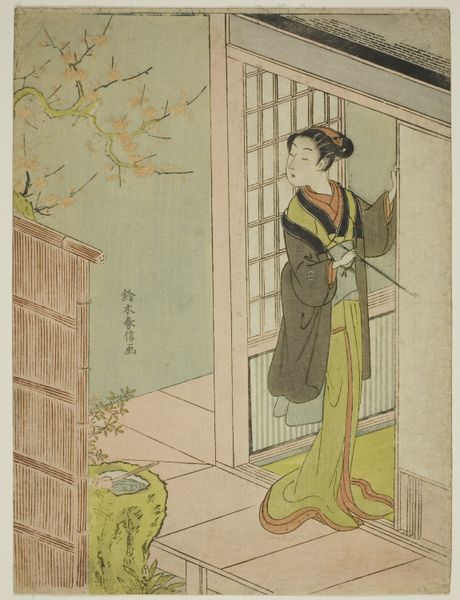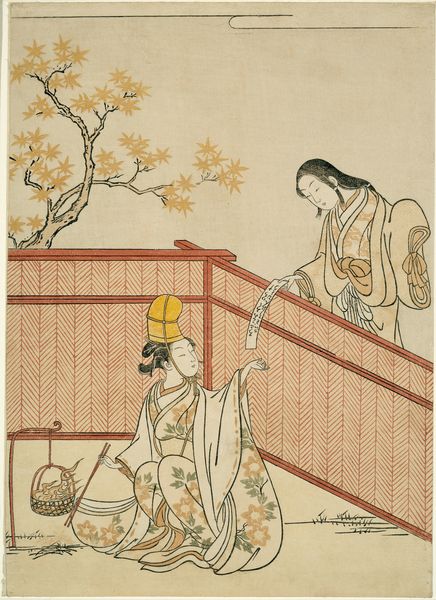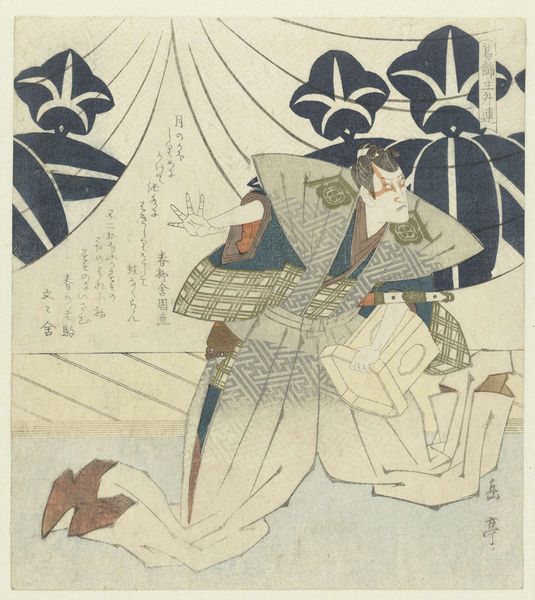
Noblewomen of the Tokugawa Period; Thirty-six Beauties (Sanjuroko kasensoro 1891 - 1893
0:00
0:00
Dimensions: Overall (each): 14 x 9 1/2 in. (35.6 x 24.1 cm)
Copyright: Public Domain
Curator: Mizuno Toshikata's print, titled "Noblewomen of the Tokugawa Period; Thirty-six Beauties," from around 1891, captures a world of refined beauty. The textures seem remarkably rendered for a print. What are your initial impressions? Editor: Serenity, definitely. It feels poised, balanced, even with the geometric patterns offset by the garden scene. But tell me more about the "print" itself. What kind of materials are we looking at, what would the labor entail? Curator: It’s a woodblock print, likely employing multiple blocks for the layered colors. Think about the carving required for each delicate line, the precise registration of each color layer, each shade carefully considered to evoke her melancholic yet graceful presence. It must have taken time, skill and patience to craft each impression, turning what many consider a medium for the masses into something exquisite. Editor: Exactly, it’s this intersection of 'high' art techniques and 'low' art accessibility that gets me going. The choice of woodblock—readily available, relatively inexpensive—democratized image production to some degree. This piece makes me wonder about distribution, circulation. Were these prints luxury goods, destined for wealthy patrons, or could a wider audience access these visions of idealised womanhood? Curator: A bit of both, I think. Ukiyo-e prints, while relatively affordable, depicted a world of aspiration. Her kimono is clearly the product of laborious craft. It makes one wonder how far a single woman might go to project this perfect facade, or to capture and represent an ideal of noble womanhood? There's that beautiful juxtaposition, the weight of the fabrics she wears and her light fingers touching a koto’s strings, as light and ethereal as musical notation floating away on a summer breeze. Editor: You've touched on another important point. While appearing effortless, leisure time and these pursuits often conceal a great amount of work – preparation of materials, upkeep of instruments, mastering skills, curating social images – these are material processes, embedded within specific economic circumstances, reflecting gendered divisions of labor in the Tokugawa period. That should make us ask questions about her context and status even today. Curator: Ultimately, Toshikata’s print offers more than just a pretty picture. It presents us with a fascinating intersection of artistry, craft, and the social complexities embedded in portraying beauty. Editor: Absolutely, I now view that quiet moment in the print so very differently! This has deepened my appreciation of this object as something far more layered.
Comments
No comments
Be the first to comment and join the conversation on the ultimate creative platform.
